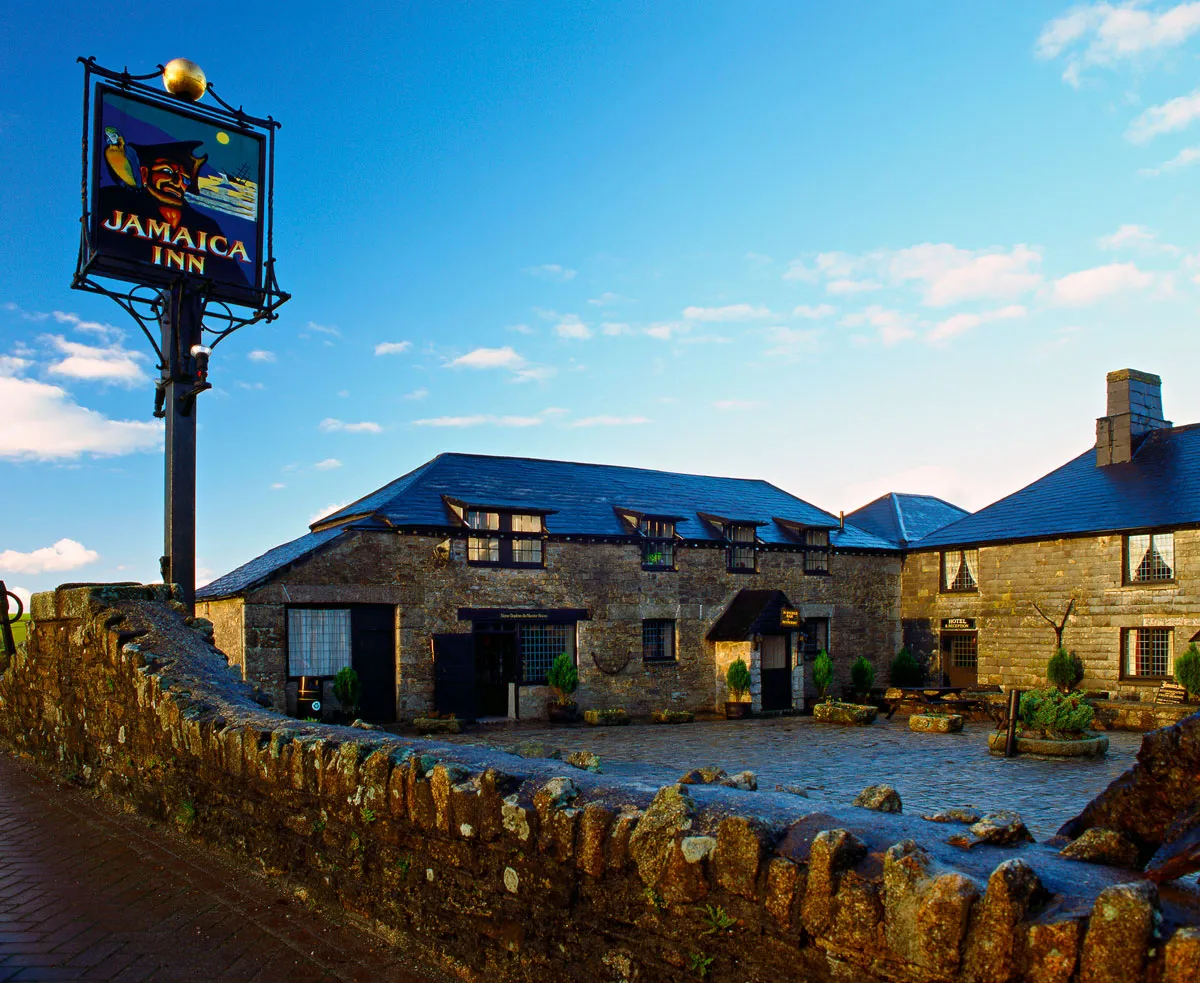Rural inns and taverns have long been the pulsating hearts of their communities, so it’s hardly surprising that myriad unsavoury episodes have occurred within their walls and that these have echoed down the ages to tingle our modern-day spines.
At first, it appears a friendly boozer, but after a few pints, locals whisper about its murky past. Dixe Wills sips from the heady brew of myth and legend that swirls around some of our favourite rural pubs.
Here is our guide to the most haunted pubs and inns in Britain which looks at the history and haunted tales that lurk within.
Pilchard Inn, Burgh Island, South Devon
Oh yes, people have seen things levitating in here.” The barman at the Pilchard Inn sounded quite casual as he told me this. “And there have been pint glasses that have smashed themselves on the floor overnight.”
You get an awful lot of poltergeist with your pint at this tiny 14th-century pub on Burgh Island, just off the Devon coast. According to legends, a 19-year-old smuggler called Tom Crocker was shot dead by a customs official in the doorway of the Pilchard’s bar in 1759 and that his ghost now haunts the place. Understandably, in an effort to keep his unruly spirit sweet, whoever locks up of an evening makes sure to bid Tom goodnight.
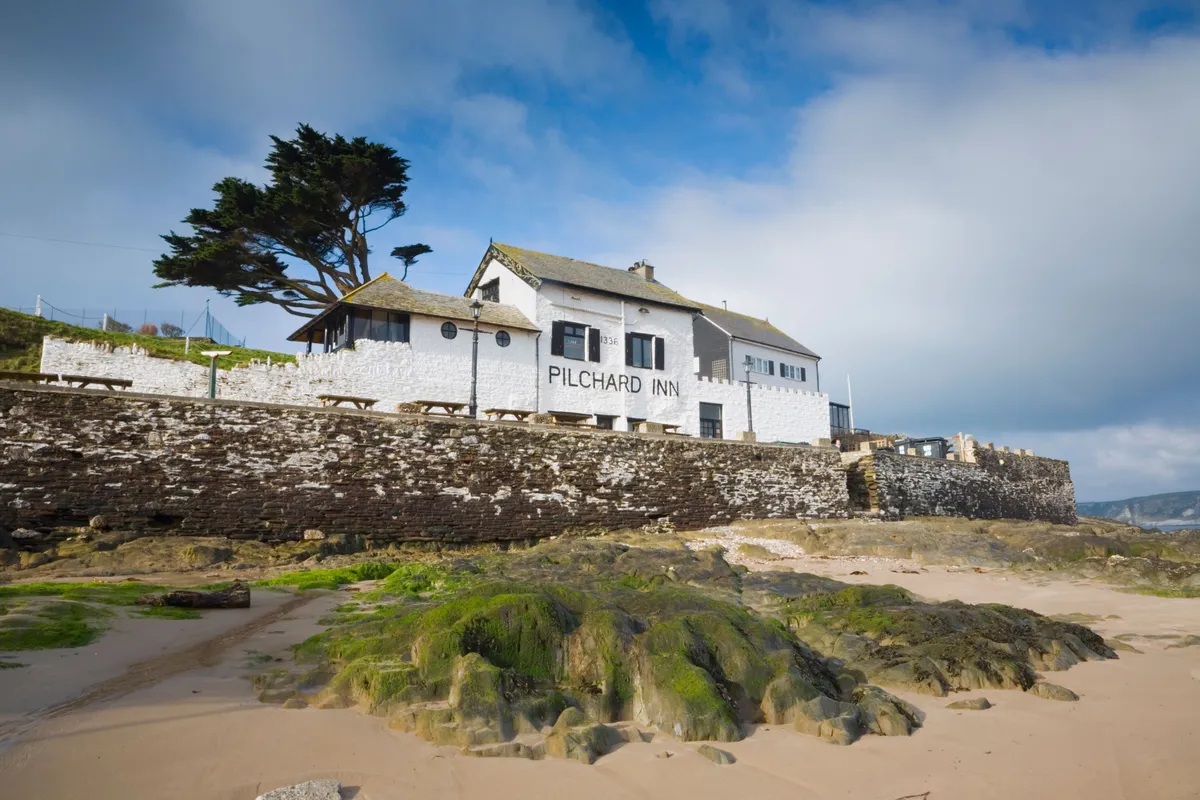
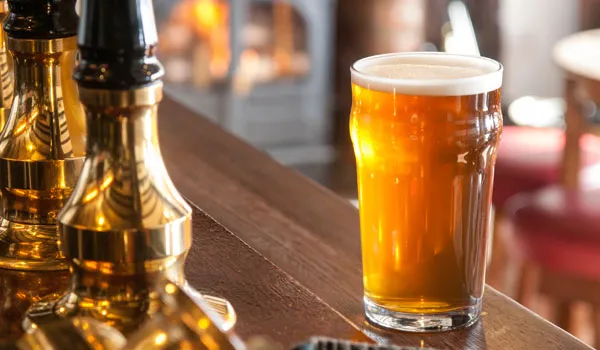
The Bucket of Blood, Phillack, Cornwall
Some pubs wear their gruesome associations on their sleeves. The Bucket of Blood, in the tiny Cornish village of Phillack, is so called because a landlord once drew up a blood-filled pail from a nearby well. The incident led to the grisly discovery of a body in the sanguineous waters below.
Three-legged Mare, York, North Yorkshire
For centuries, the ultimate crime had fatal consequences for those found guilty of it, and numerous are the pubs that glory in the name The Gallows. However, there’s only one – York’s Three-Legged Mare (affectionately known to locals as the ‘Wonky Donkey’) – that commemorates a special device on which a trio of miscreants could be hanged at once.
The Quiet Woman, Earl Sterndale, Derbyshire
The Quiet Woman in Earl Sterndale, Derbyshire, with its ancient beams, open fire and skittles, may seem charming and unspoilt now, but its euphemistic name refers to the ghost that haunts the pub, a woman who was silenced forever by a brother who decapitated her.
The Bull, Long Melford, Sudbury
Unfortunately, violent death has stalked the nations’ drinking houses ever since the Romans introduced the concept to Britain almost two millennia ago. At Housesteads Fort on Hadrian’s Wall, archaeologists discovered two skeletons buried beneath a tavern, one of them with a knife still protruding from its ribcage.
In 1648, one Richard Evered met a similar end, stabbed by Roger Greene at The Bull in Long Melford over a disagreement about politics. One hopes the current denizens of the beautiful 15th-century timbered inn steer clear of such febrile topics nowadays.
The Bull, Streatley, Reading
The Bull at Streatley proved equally perilous for a medieval monk and nun. Their bodies were buried in the pub garden – which is still in use today – after they had been executed for having found in each other an all-too-tempting reason for abandoning their vows of chastity. Today this 15th Century coaching inn is a pleasant spot for a quiet drink or traditional pub meal.

Kingshouse Hotel, Glencoe
However, by no means all country pub murders are confined to the Middle Ages. In 1877, at the remote Kingshouse Hotel in Glencoe, the landlady Sophia MacDougall tragically met her death in the bar at the hands of her husband.
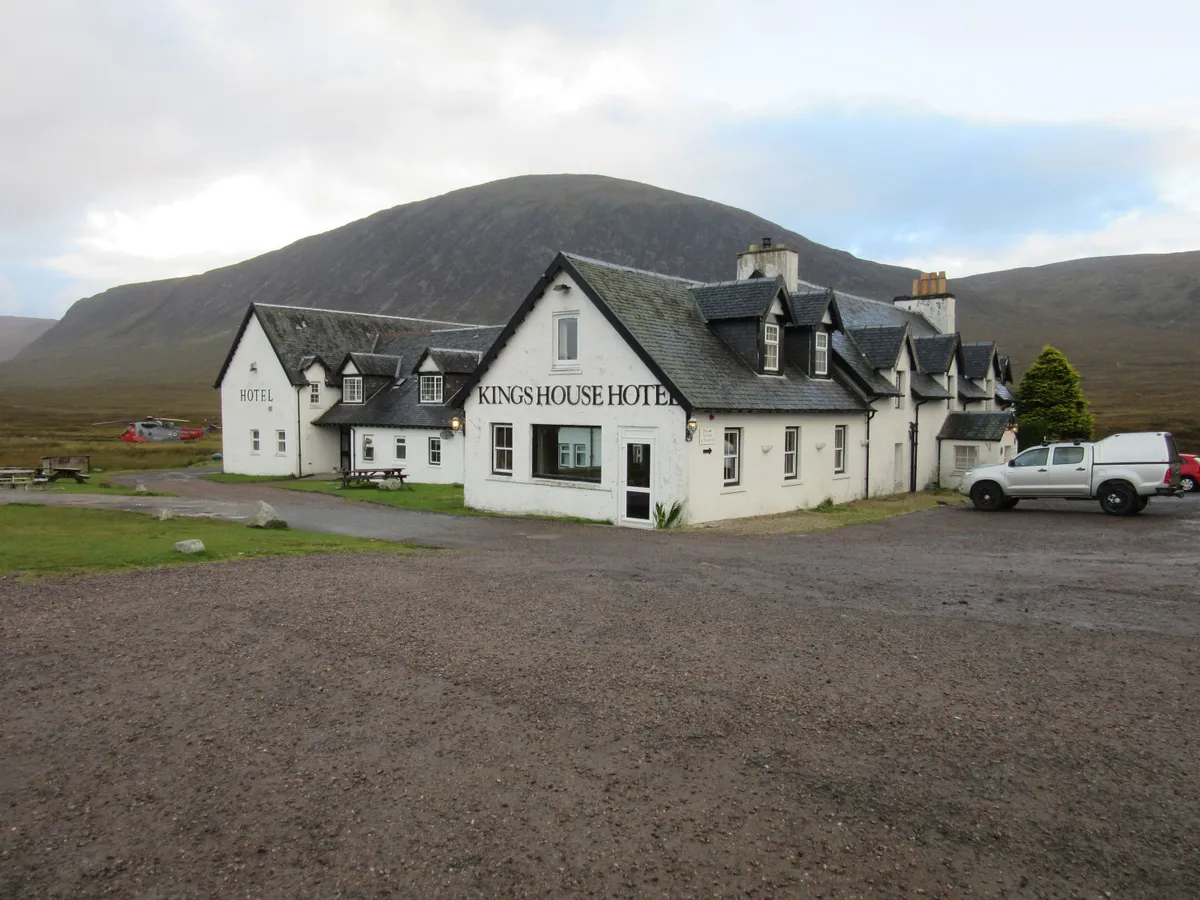
Lantern Pike, Little Hayfield, Peak District
Today, the Lantern Pike at Little Hayfield serves cask-conditioned ales on tap and offers a four-poster bed in one of its cosy rooms. But in 1927, the landlady’s husband had the misfortune of coming home to the Peak District pub to find his wife dead. Although at first it appeared she had taken her own life, closer inspection revealed cosh-marks on her head and a sum of cash missing. Amy Collinson’s murderer was brought to justice because a sharp-eyed policeman noticed a break in some old cobwebs in an outbuilding and found a blood-stained piece of lead piping. The murder weapon was traced to the home of a pub regular with financial troubles.
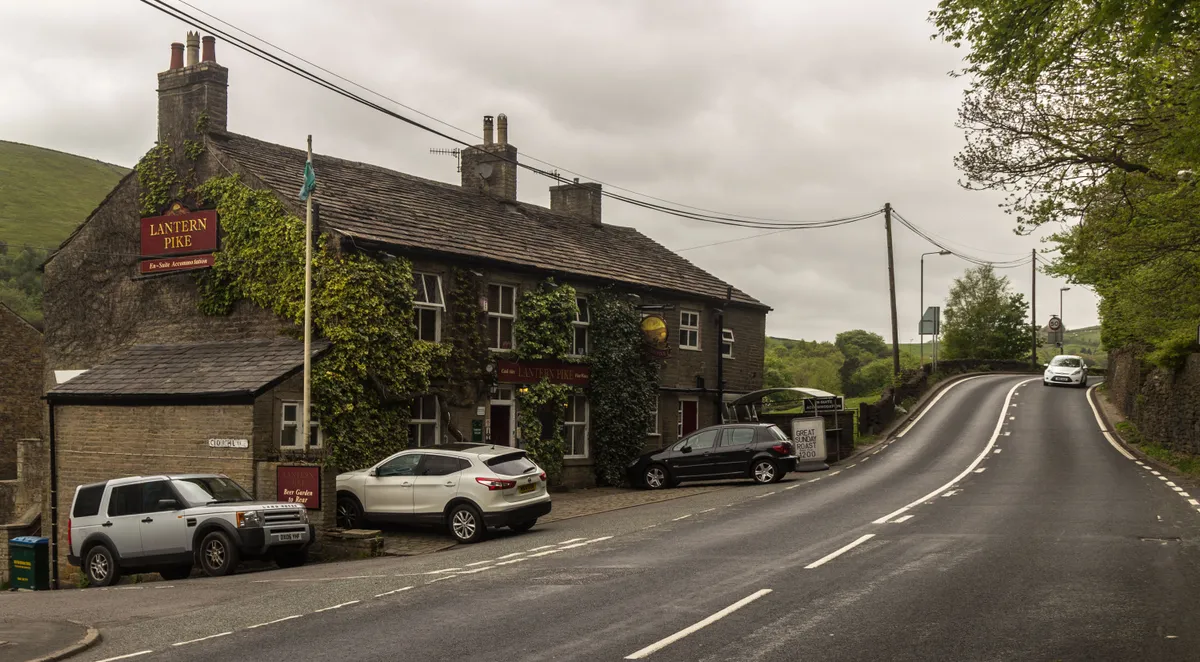
The Crown, Kingsclere, Hampshire
Today, The Crown in Kingsclere prides itself on its ever-changing guest ales, but on 5 October 1944, the Second World War came crashing in on the pub in deadly fashion. That evening, a group of GIs took revenge on some military policemen they felt had treated them unfairly. Ambushing two as they left the pub, the GIs opened fire with their rifles. The prolonged burst killed three people: one of the military policemen, and two inside the pub – a fellow GI and The Crown’s landlady, Rose Napper. Ten soldiers were later sentenced to life imprisonment in a court martial.
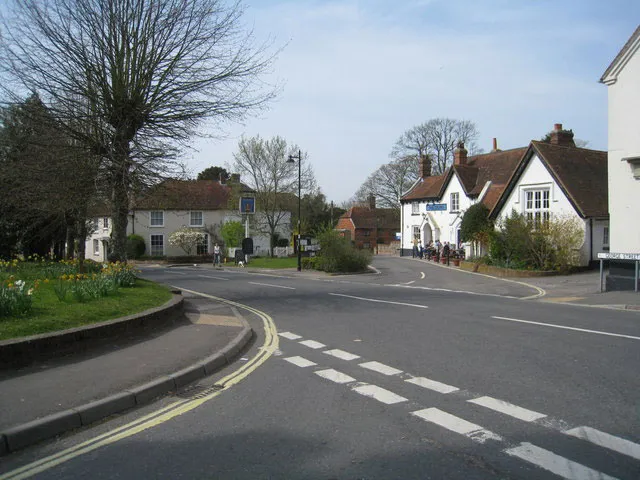
The Skirrid Inn, Monmouthshire
Where you have crime, there’s a fair chance punishment will follow swiftly behind. Since they were often the only more-or-less public space for miles, in the event of suspected murder, many country pubs doubled as temporary mortuaries, or venues for
coroner’s courts, inquests and even post-mortems.
In the wilds of Monmouthshire, the Skirrid Inn went one better, serving as both courthouse and place of execution. Visit the gloriously ancient pub today – it’s said to be the oldest in Wales – and you can see the oak beam from which more than 200 malefactors were hanged. And just in case that’s not macabre enough for guests, a noose still swings from it. Unsurprisingly, the place is reputedly teeming with the ghosts of the violently departed.
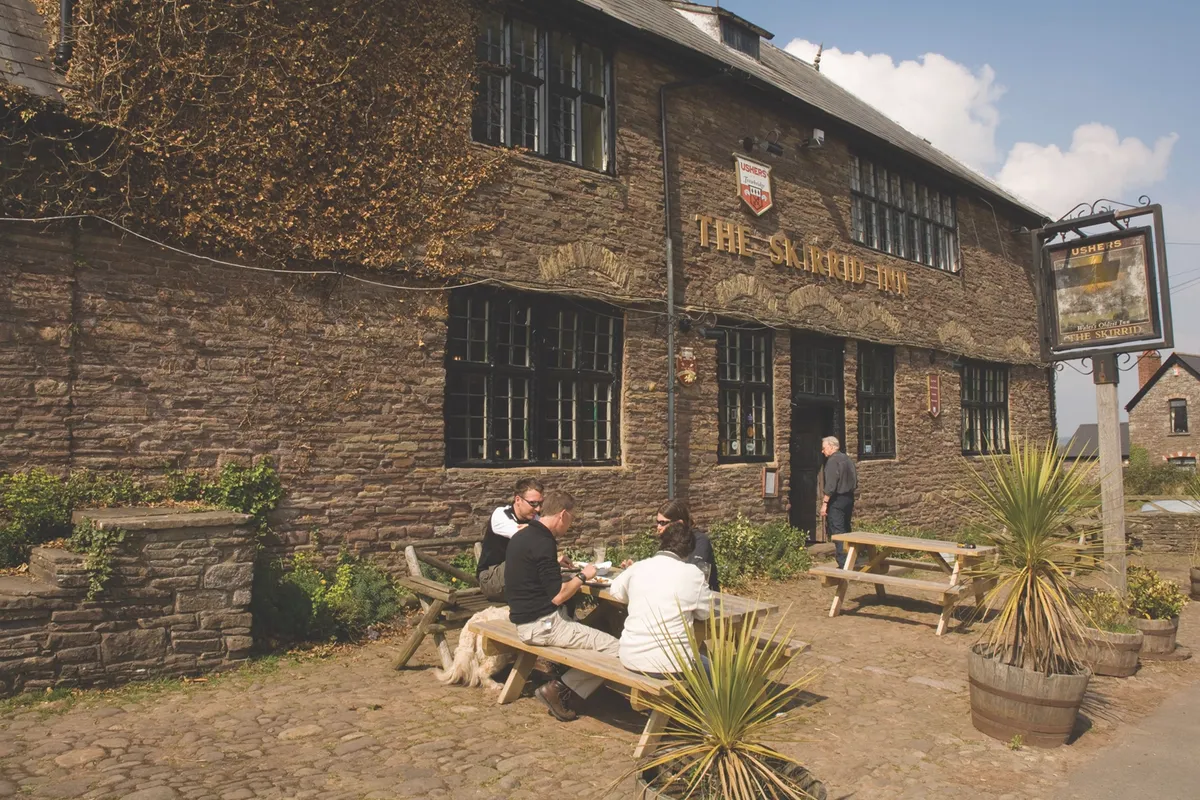
The Drover's Inn, Loch Lomond
Ah yes, we’re back to ghosts. From the disturbing tale of the drowned little girl at the imposing and grand Drover’s Inn near Loch Lomond. Dating back more than 300 years’, it comes as no surprise that the walls of this historic inn tell a tale or two.

Crumplehorn Inn, Polperro, Cornwall
To the First World War deserter chattering in the loft at the charming Crumplehorn Inn on the Cornish coast, Britain’s rural pubs host a cavalcade of unquiet spectres.

Red Lion Inn, Avebury, Wiltshire
The 17th-century Red Lion Inn at Avebury boasts a whole array of them. The spirits of two children and their mother are said to inhabit one of the guest rooms; a ghostly carriage turning up on the cobbled courtyard presages the death of a near-relative of the landlord; and the pub’s bearded patrons are wont to encounter the unfaithful Florrie, whose Civil-War soldier husband took her life. The deep well in which poor Florrie’s remains were hidden can be viewed through the glass top of a table in the bar.
Many public houses have found notoriety as the haunts of smugglers. Their landlords were often grateful recipients of illicit hooch and so had an interest in protecting their local bootleggers from excise men.
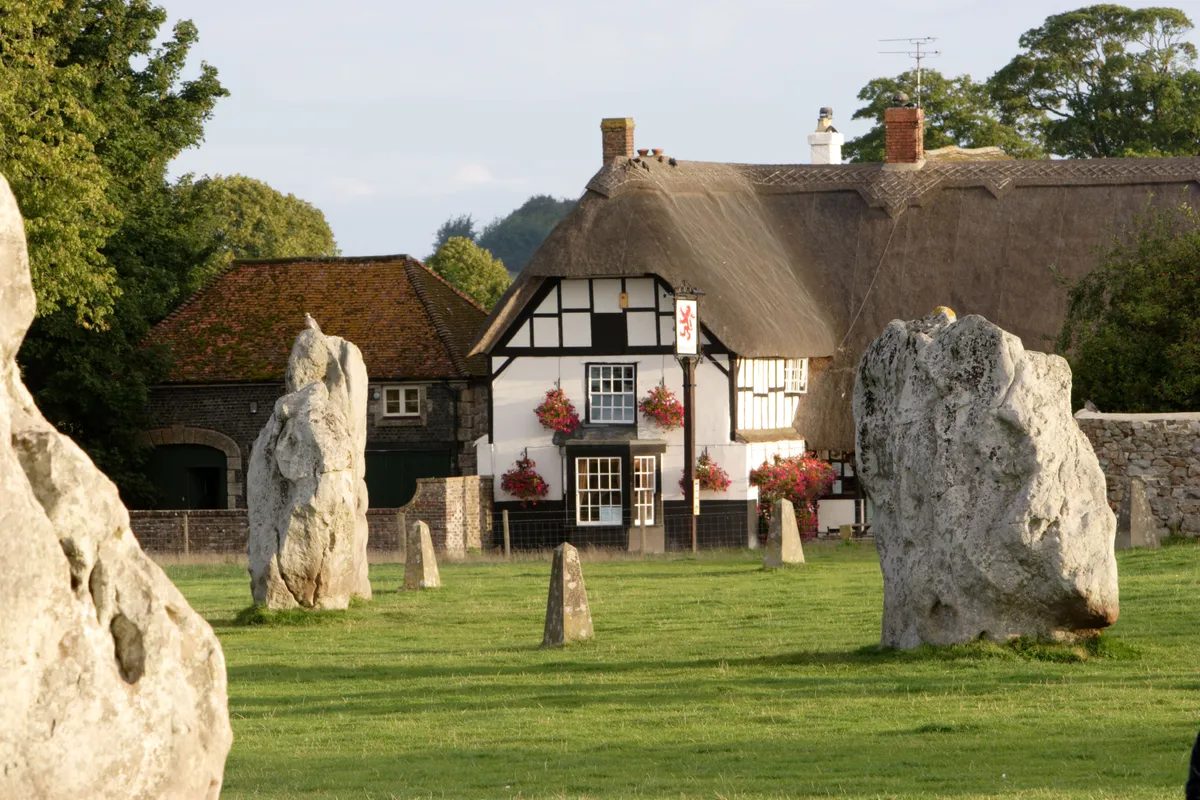
Mermaid Inn, Rye, East Sussex
At Rye’s half-timbered and wonderfully evocative Mermaid Inn you can still see the entrance to the tunnel that is purported to run to the even more ancient Ye Olde Bell Inn (where you can now enjoy some very modern tapas on the terrace). This was used by the ruthless Hawkhurst Gang in the 1700s, who would drink at the Mermaid with their firearms laid ready on the tables before them. Such weapons were frequently used, too.
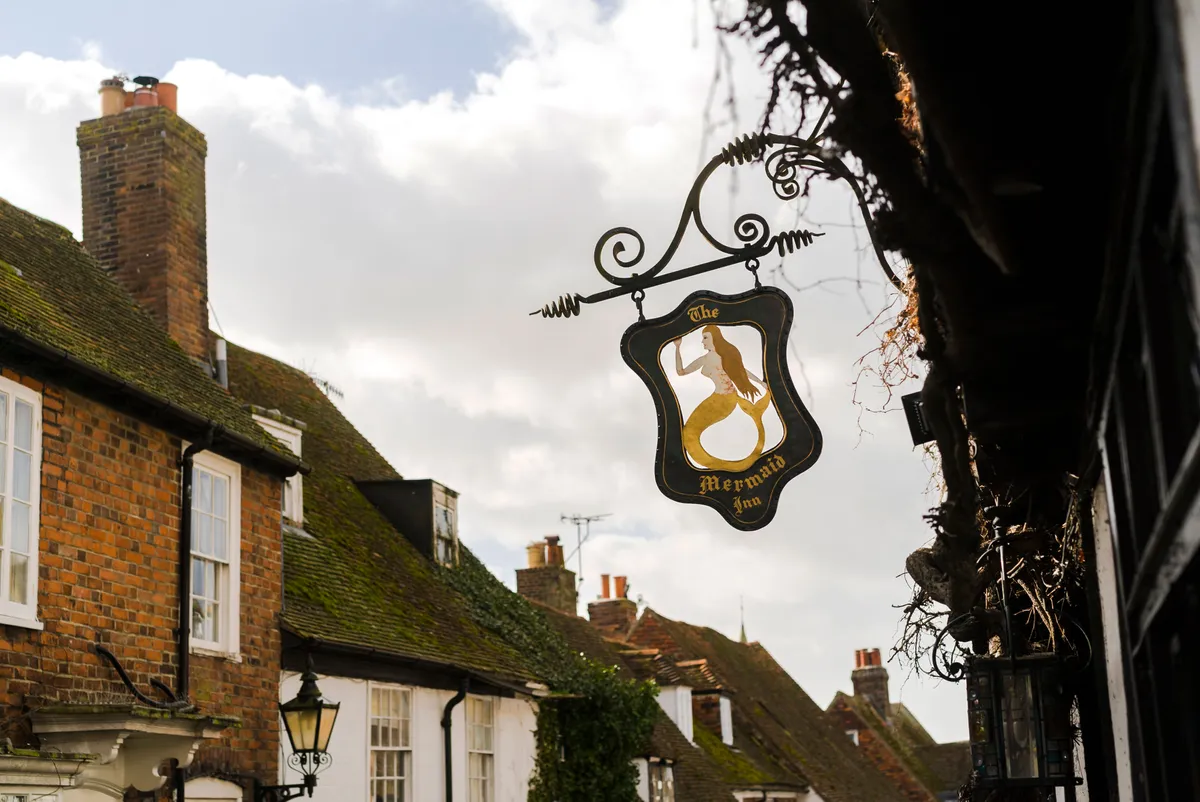
Haven House Inn, Mudford, Dorset
At Mudeford Quay, on the Dorset coast, a pitched battle was waged between excise men and a gang of smugglers who had barricaded themselves inside the Haven House Inn. One of the malefactors, George Coombes, would consequently rot in a gibbet just outside.

Sheep Heid Inn, Edinburgh
There has even been one instance of a ‘resurrection’ at a pub. In 1724, the now rather fancy Sheep Heid Inn at the foot of Arthur’s Seat was chosen as a refreshment stop by friends and family conveying the body of Maggie Dickson to Musselburgh for burial. She had been hanged earlier in the day, convicted of killing her illegitimate child (which may actually have been stillborn). One can only imagine the party’s surprise and delight when their ‘corpse’ moved the coffin lid. The next day, Ms Dickson walked home to live on for another 40 years.

The Hatchet, Bristol
But the accolade for the oddest and creepiest feature in a public house must go to The Hatchet in Bristol. Dating back to 1606 it is one of Bristol’s oldest pubs, it was once the hangout of highwaymen and its ancient front door is reputed to be embedded with layers of human skin. The hostelry serves what it calls ‘vegan comfort food’, which, after a ghoulish brush with an epidermal entrance, sounds like just the ticket.

Ram Inn, Gloucestershire
For a truly haunting experience, Ram Inn is the place to visit. With guided ghost hunts throughout the year, the building is sure to surprise and terrify. Built on the intersection of two ley lines that can be traced all the way to Stonehenge, this decrepit old building is rife with paranormal activity.
The legend goes that Stonehenge has energy, which travels through the ley lines to feed the supernatural power found in the ancient Inn. The complex history is rife with tales of burning witches, monks, a Centurian on horseback, real evidence of Devil worship and ritual sacrifice and even rumour that a pagan burial site resided in that exact location over 5,000 years ago. Not recommended for children, this one is only for the truly brave among you.
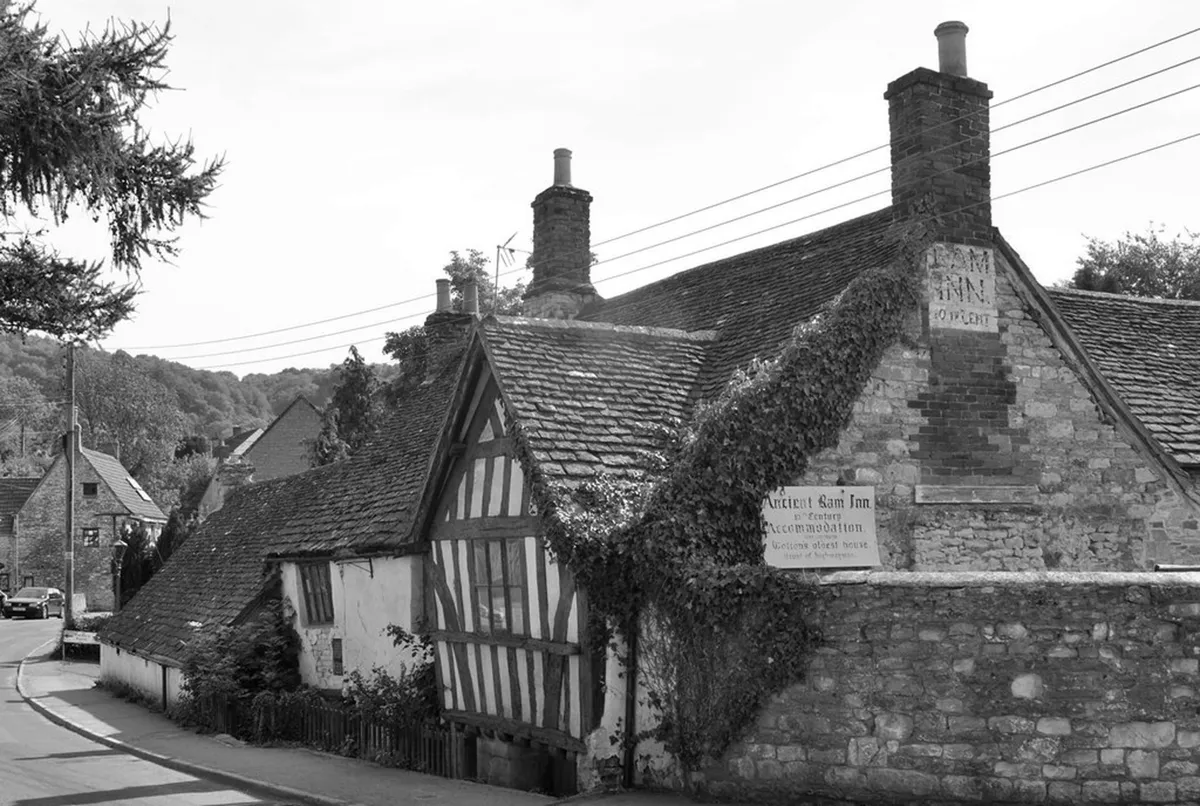
Jamaica Inn, Cornwall
Infamous for its smuggler and pirate regulars, this haunted Inn is home to many spectoral sights and sounds. Investigations have repeatedly been made into the sound of footsteps in the Smugglers Bar, possibly of a man murdered and left on the moors, returning for the last half of his pint of ale. Have lunch, a drink or if you dare, even stay the night in one of the haunted rooms and see what you come across. If your interest lies in the history of the Inn and the scurvy sea dogs that haunt it, make sure to visit the museum.
